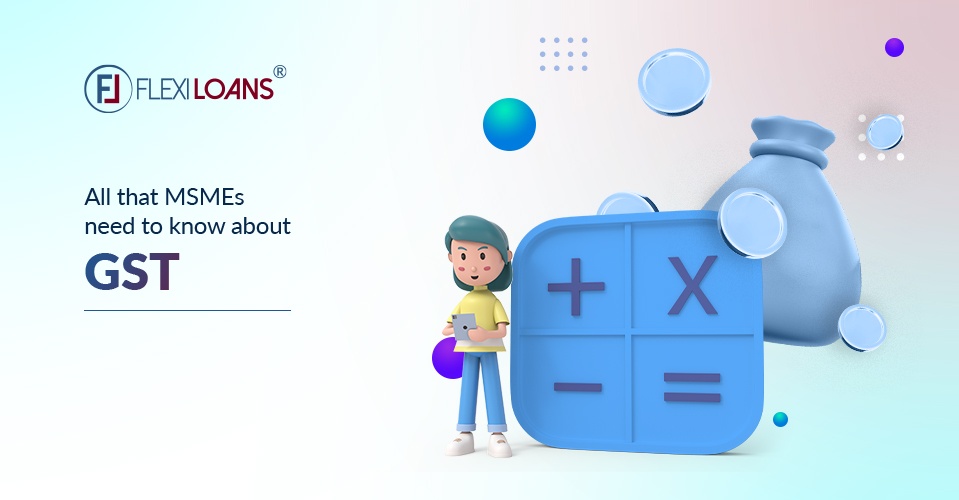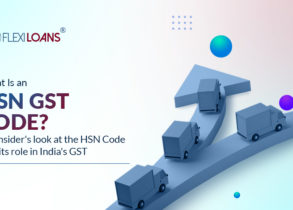May 23, 2022
Jun 26, 2025

Introduction to MSME and Taxation
For nearly half a century, small businesses and enterprises in India paid their taxes under the purview of many laws, including the most recent VAT or Service Tax. Since July 1, 2017, all registered businesses have been mandated to comply with the norms of Goods and Service Tax (GST). This includes the GST levied on MSMEs. Depending on their investments, businesses are sectioned into micro, small and medium enterprises as per the MSME Act of 2006, which spans all the states and union territories of India. The Ministry of Micro, Small, and Medium Enterprises (MSME) is an initiative of the Indian Government to formulate the rules and regulations for small, micro, and medium-scale businesses operating in India.
The impact of GST on small and medium enterprises cannot be overstated. The synchronised taxation has allowed the MSME industry of India to increase by nearly 19% in 2020, raising more than ₹ 9 trillion in capital from the government and the market. According to the Act, businesses qualifying as an MSME have a different set of taxation and compliance rules than other businesses.
The government is in the process of simplifying everything about GST in India. Many changes and regulations have been brought forward in the last couple of years with respect to GST for MSME. Here’s everything to know about GST and MSMEs.
Before we crack into it, let’s first understand what comes under the definition of MSME.
The slabs to determine the micro, small, or medium status are
| Manufacturing | |
| Business | Equipment Investment |
| Micro | ₹ 25 Lakhs |
| Small | ₹ 25 Lakhs to ₹ 5 Crores |
| Medium | ₹ 5 Crore to ₹ 10 Crores |
| Service | |
| Business | Equipment Investment |
| Micro | ₹ 10 Lakhs |
| Small | ₹ 10 Lakhs to ₹ 2 Crores |
| Medium | ₹ 2 Crore to ₹ 5 Crores |
Prerequisites of filing for GST as an MSME
Impact of GST on small scale industries can already be seen and felt. From curtailing business losses to bringing the aggregate taxation percentage, GST is a boon for developing businesses. Every registered MSME pays taxes under the Single Tax Regime of GST. To begin the process, MSMEs need to apply for a Goods and Services Tax Network (GSTN) number that specifies their standard business operations and inventory turnover. The GSTN number connects you to the entire pool of registered MSMEs in the country and is an integral part of the MSME’s identity as a business. Furthermore, a GSTN determines the business loan eligibility of an MSME. Small and medium businesses require GSTN to apply for any MSME loan.
MSMEs can apply for a GSTN by submitting the following details at the GST portal:
- Aadhaar Card number of the primary proprietor
- Pan Card number of the primary proprietor
- The registered business address of the MSME
- MSME business registration certificate
- Excise registration details (SCT/Service taxVAT)
- Pan card number of the primary proprietor
- Bank Account number and details of the registered business
- Specific documents required on the portal
Latest Changes in MSME and GST
There have been multiple changes in the GST for MSMEs. The new system of GST filing has been operational since October 2020 and is designed in a way to minimise errors in GST filing for MSMEs.
Here are some of the changes introduced:
- Filing: As per the new system, there are three main forms of GST returns: Normal (RET-1), Sahaj (RET-2), and Sugam (RET-3).
- Frequency: The frequency of tax filing now depends on the turnover of the business.
- Turnover: All businesses with less than ₹ 5 crore turnover (increased from ₹ 1.5 crores) can file quarterly tax returns instead of monthly returns as prescribed earlier. Businesses with more than ₹ 5 crores annual turnover must file taxes monthly.
- Sahaj and Sugam: The Sahaj return dictates that all B2C transactions for businesses under 5 crores annual turnover must be filed quarterly (every four months). The Sugam return dictates that all B2C and B2B transactions for businesses under ₹ 5 crores annual turnover must be filed quarterly.
- Input Tax Credit: Taxpayers can now take conditional credit for all missing invoices and submit them later. The ITC is to be claimed with auto-uploaded transactions in ANX-2 available through the purchase register.
- Missing invoices: The missing invoices will now be reported using RET-1, as opposed to GSTR-38 in the previous system.
- Canceling registration: There is no need to file return forms once registration for cancellation has been filed.
- Reverse Charge Mechanism (RCM): Inward supplies under the RCM will now be reported in the ANX-1 at GSTIN.
- Harmonised System Nomenclature (HSN): HSN is now to be reported at the invoice level.
- Imports: Imports of goods will now be reported under the GST AND-1.
Impact of GST on Small and Medium Enterprises
With maximum revenue collection for FY 2021–2022, the impact of GST on small and medium enterprises has been largely positive. GST on MSMEs is structured to minimise painful processes and cumbersome taxation laws with a Single Tax Regime. GST is aimed at pooling resources together and equipping businesses with the most hassle-free ways of filing their taxes.
Positive Impact of GST on Small and Medium Enterprises
- The merger of taxes such as Service Tax and VAT has paved the way for single, sensible, and common sense tax laws in the country. The Single Tax Regime of GST for MSMEs foregoes multiple tax routes and forms and keeps direct and indirect taxation laws simple and compilable.
- The GST regimen has curtailed the combined taxes from a whopping 32% to a sensible 18–22%.
- The consideration of the cost of production and transportation has made operations cost-effective and reduced the burden of operation for thousands of MSMEs, which is a positive impact of GST on the small scale Industries.
- To curb the impact of instant invoice uploads and sales price parity in businesses, the government has launched TReDs. TReDs (Trade Receivable Discounting System) is a parallel tax system designed to accommodate the sales, slashed prices, and discounting schemes in trade receivables.
- The dissolution of complicated state taxation has allowed MSMEs to breach state lines and expand their business to the entire country.
- The GST registration process is smooth and easy, as opposed to the delayed and lengthy processes of its predecessor.
Negative Impact of GST on Small and Medium Enterprises
- Businesses across the country must register online for GST for each state individually. Small business owners, hailing particularly from less-online savvy backgrounds, find the process unsustainable.
- With the introduction of matching transactions with invoices on the initial level, the taxpayers will have to upload invoices in real-time, which is challenging and runs the risk of being erroneous.
- In case of a failure to file the missed invoices within the allotted period, the recipient of the provisional credit will have to reverse the ITC claim, which is cumbersome and unsavoury for businesses.
GST Cloud Accounting
The updated rules of GST for MSMEs come with an accounting system that allows the auto-population of fields to save precious time and resources. To bolster the impact of GST on small-scale industries, the revamped GST has introduced and promoted e-invoicing in all sections of the country. All the invoices are directly uploaded to the GSTN portal, which allows you to have parallel electronic bookkeeping alongside your manually prepared registers. As invoices are uploaded in real-time, they add up to your quarterly tax returns.
Conclusion
New GST updates are in line with building a self-reliant and accessible Single Tax Regime that serves both emerging and established MSMEs of India. MSMEs are one of the most important revenue-generating blocks of India, contributing to nearly 30% of India’s total GDP and providing 60 million jobs. Instituting the GST tax discipline educates, empowers, and reinforces MSMEs for their role in nation-building.







